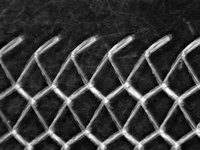Materials are supplied to our customers in bulk form. Fabrics have been cleaned to remove machine oils and fiber finishes used in the manufacturing process. However, cleaning of your finished medical devices is required before final packaging. The devices should be cleaned using a method compatible with the product composition and manufacturing environment after you have finished fabricating your devices and prior to packaging.
A common technique is to use an ultrasonic tank or circulating bath with a cleaning solution. The solution can be an aqueous system that uses a nonionic surfactant solution. A 70% Isopropyl alcohol solution can also be used in a circulating bath system. Precautions must be taken if using an ultrasonic cleaner with solvent. The ultrasonic cleaner must be rated for use with solvents or a secondary sealed container can be used in a conventional cleaner where the solvent is not in direct contact with the walls of the tank. A closed cleaning system or one with a condensing chiller can be used with a solvent, such as bromothane. A cycle time of 5 minutes should be adequate. If using a nonionic surfactant solution, then at least two rinse cycles with purified water should be used to remove residual cleaning solution. Very little surfactant is required as fiber finishes and machine oils have already been removed. After washing, the products will need to be dried. A cabinet dryer at a temperature of about 100° C can be used to facilitate drying. Super critical fluid extraction is also a very good cleaning technique. The exact cleaning method employed will need to be verified for your specific product and application.
Mesh and felt fabrics can be cut by many means, including:
Laser cutting has become the most widely used technique due to its versatility and ability to seal the cut edges. Laser cutters can cut any shape and seal the edges while doing so. Sealed edges prevent shedding of cut loops at the fabric edges and do not generate debris in the cutting process.
If cuts or slits are created in our polypropylene mesh fabrics in the machine (warp) direction during the fabrication process or by the end user, it is advisable to place a reinforcing stitch at the end of the cut to prevent it from separating further. Certain styles of our polypropylene mesh fabrics may be more prone to this. Please contact us if you have any questions or concerns regarding this.
In addition to traditional cutting techniques for resizing the mesh fabrics, we have a few types of polypropylene mesh fabrics that are conducive to splitting, that is, they can be separated in the length (warp) direction of the fabric. It is a useful technique for producing narrower webs of fabric that have formed looped edges as opposed to cut loop edges. The resultant edges are softer and produce less debris as compared to cut edges.

Polypropylene mesh styles PPKM403, PPKM501, and PPKM601 are capable of being split into narrow webs and tapes.
The mesh fabrics may undergo relaxation when they are cut from the supply rolls, that is, they may contract in length and expand in width by a few percent.
The mesh is wound into rolls under low tension. The low tension can stretch the fabric slightly. When the fabric is unwound from the roll, it may retract due to relaxation. If this relaxation is a concern for your final part dimensions, then we recommend that you unwind the fabric from the roll and allow it to relax without any tension. You can cut the fabric into sheets at this point if it is required for your cutting process. Warm temperature conditioning or mechanical agitation in an unrestrained state will facilitate relaxation.
Polyester-based products can be sterilized using most techniques, including gamma (Co60) irradiation, beta (e-beam) irradiation, steam autoclave, carbon dioxide super critical fluid, and ethylene oxide (EtO).
Polypropylene-based and polytetrafluoroethylene-based products can be sterilized using steam autoclave, carbon dioxide super critical fluid, and ethylene oxide (EtO). Polypropylene and polytetrafluoroethylene must not be sterilized using irradiation techniques, such as gamma or beta irradiation, as the polymers will be significantly degraded. The exact sterilization method employed will need to be evaluated for your specific product and application.
Click on the Brochure button below to view mesh processing considerations.